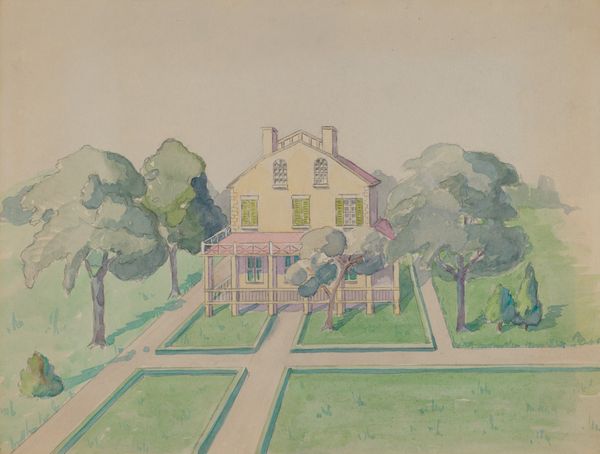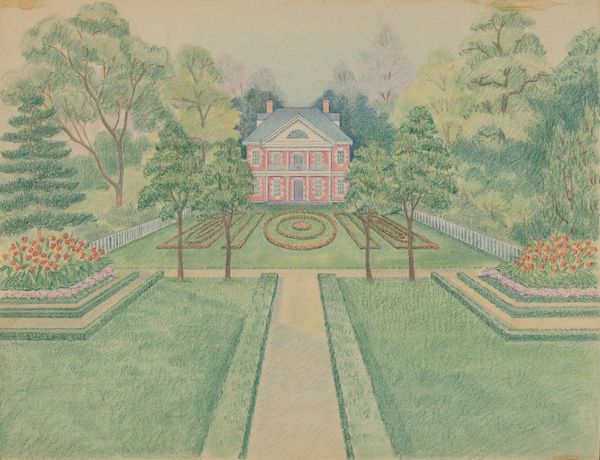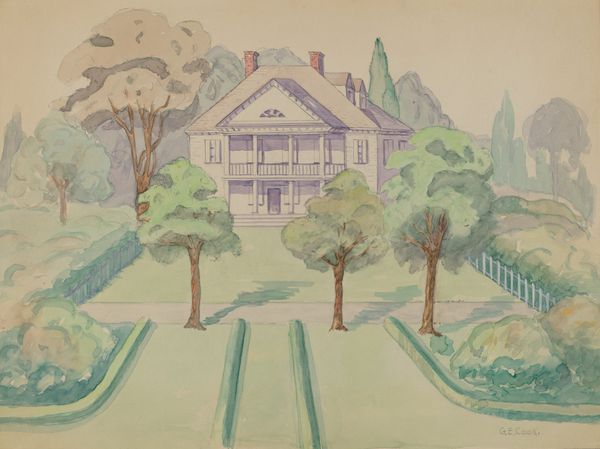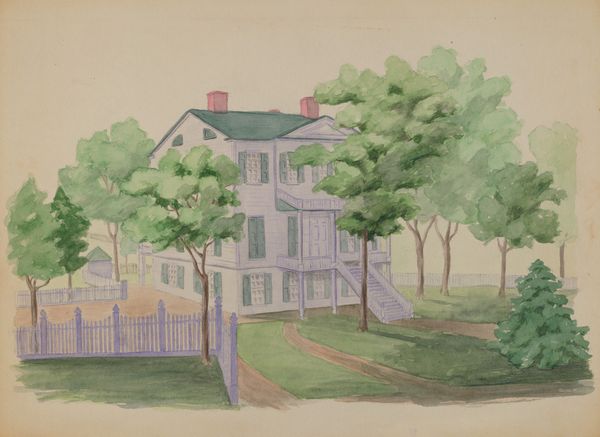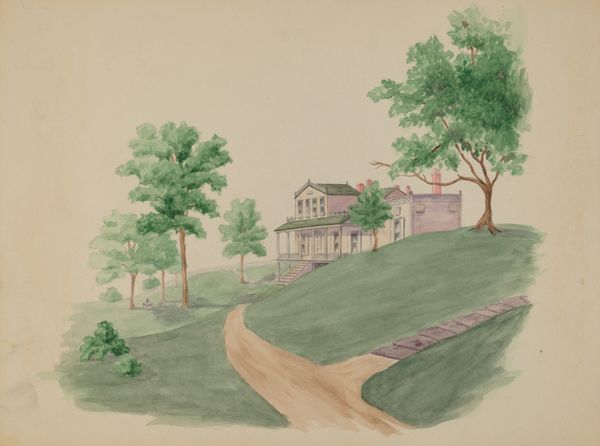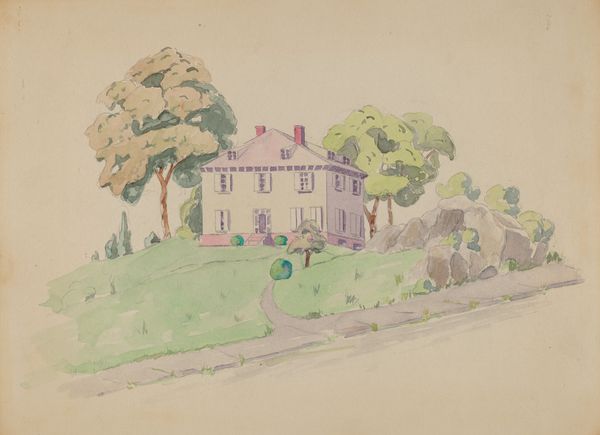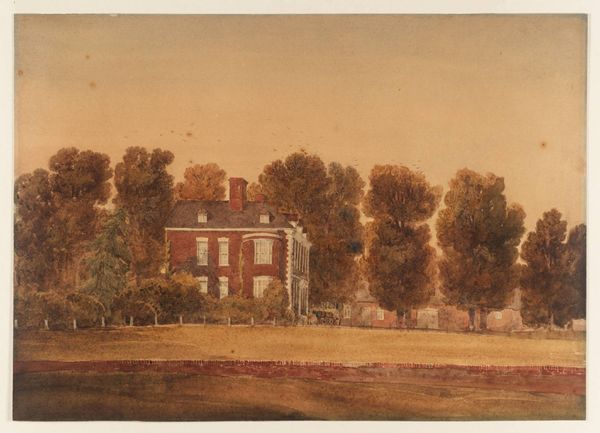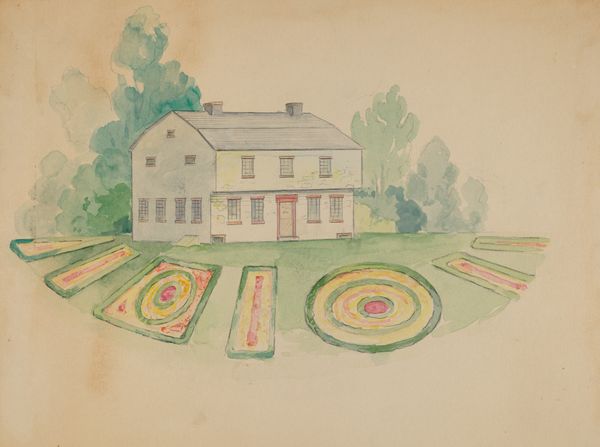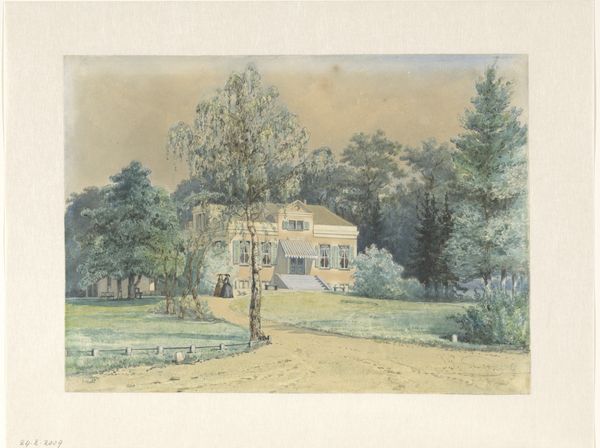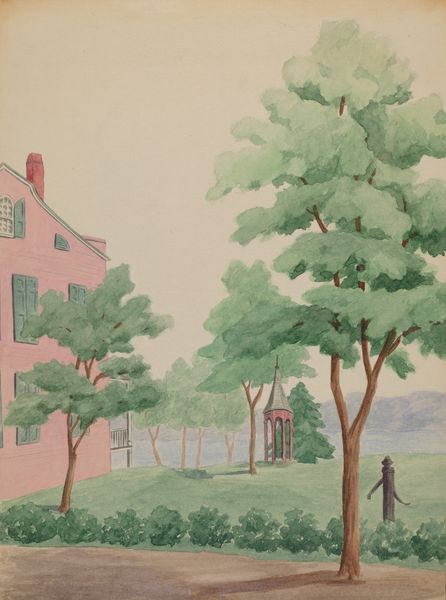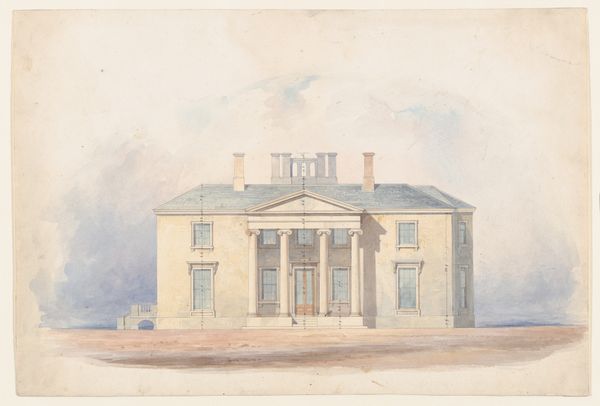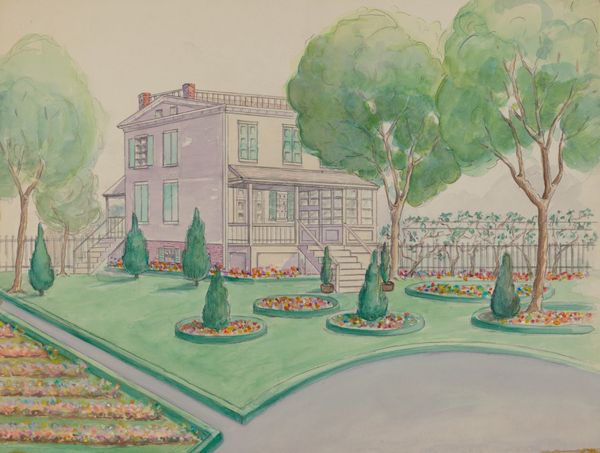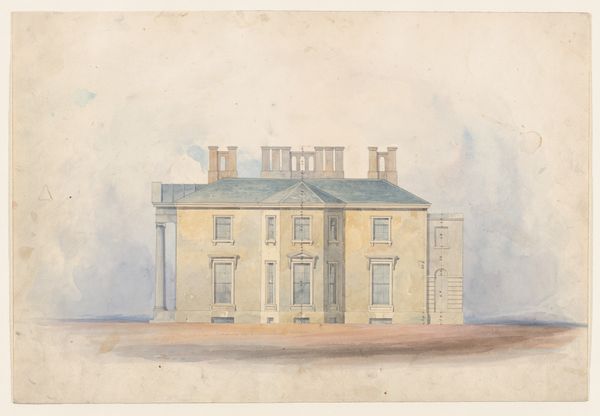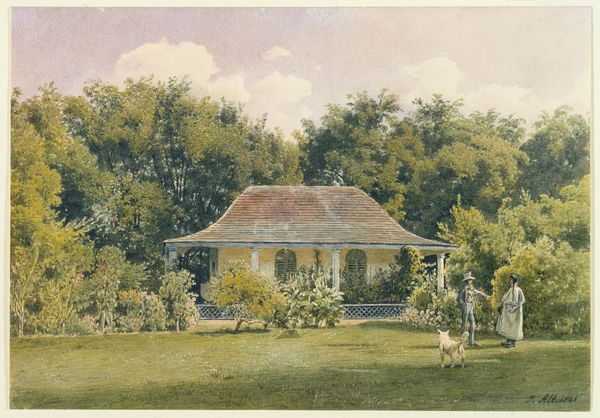
drawing, plein-air, watercolor
#
drawing
#
water colours
#
plein-air
#
landscape
#
watercolor
#
cityscape
#
watercolour bleed
#
watercolour illustration
#
watercolor
#
realism
Dimensions: overall: 22.5 x 29.9 cm (8 7/8 x 11 3/4 in.)
Copyright: National Gallery of Art: CC0 1.0
Curator: Before us we have Gladys Cook’s “House of Benjamin C. Moore”, a watercolor and pencil drawing from around 1936. Editor: Ah, yes. At first glance, it has such an ethereal, dreamlike quality to it. Like a memory fading at the edges, the subtle hues evoking a sense of tranquility and gentle nostalgia. Curator: Indeed. The architectural depiction adheres to classical landscape conventions, especially with those strong vertical cypress trees framing the central structure. Their deliberate placement directs our gaze to the neoclassical symmetry of the house. Editor: Those towering cypress trees, like slender sentinels, almost whisper secrets of bygone eras. They definitely contribute to that contemplative, maybe even melancholic mood. I mean, the whole composition seems steeped in a gentle sadness. Curator: That is an interesting observation, although I find its masterful application of the watercolour medium more prominent. Notice how Cook employed a "wet-on-wet" technique in certain passages, such as the rendering of foliage, in order to achieve subtle tonal gradations. Editor: Absolutely, those watercolour bleeds create the sense of humidity on a hot summer afternoon. I see the house is almost levitating out of its green foundation. Look, I might even venture that she was going for more than just a formal portrait here. There's an emotional undercurrent running beneath those elegant lines and soft washes. It's hard to put my finger on it. Curator: If we use formalist lenses we appreciate its artistic integrity of representation through lines, tones and composition without necessarily adhering to the specificity of historical accuracy, instead we look at art through intrinsic aesthetic values. Editor: Perhaps we're both seeing different facets of the same thing: its enigmatic presence. Anyway, it invites us to ponder on the stories embedded within those walls, right? Curator: Indeed, it encapsulates a bygone era, viewed through a lens that both preserves and obscures. Editor: It really does feel like glancing into the past, doesn’t it? Thanks.
Comments
No comments
Be the first to comment and join the conversation on the ultimate creative platform.
